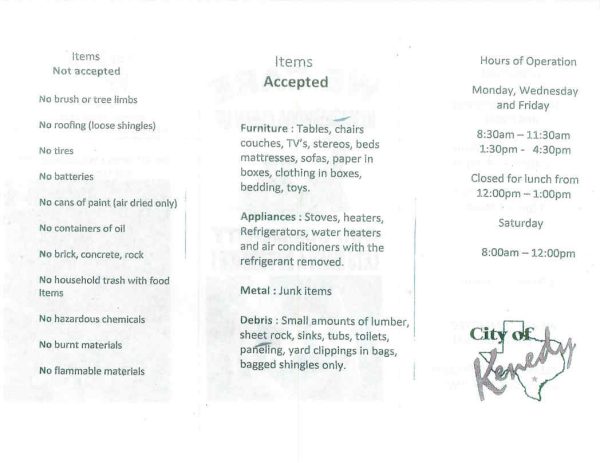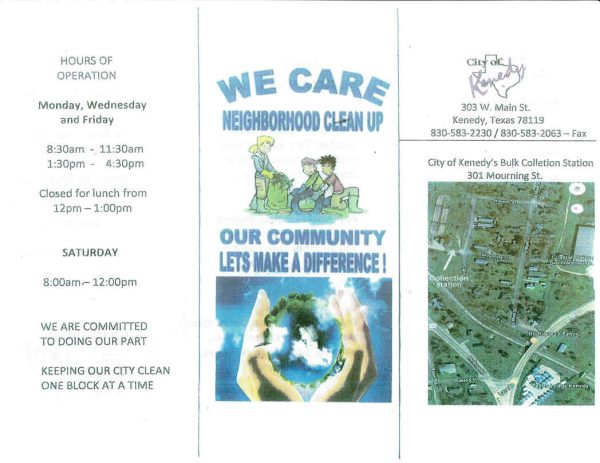Boil Water Notice for Community Public Water Systems
<10/06/2021>
Due to WATER MAIN REPAIR AND LOSS OF WATER PRESSURE, the Texas Commission on Environmental Quality has required the CITY OF KENEDY, PWS 1280002 public water system to notify all customers to boil their water prior to consumption (e.g., washing hands/face, brushing teeth, drinking, etc.). Children, seniors, and persons with weakened immune systems are particularly vulnerable to harmful bacteria, and all customers should follow these directions).
To ensure the destruction of all harmful bacteria and other microbes, water for drinking, cooking, and ice making should be boiled and cooled prior to use for drinking water or human consumption purposes. The water should be brought to a vigorous rolling boil and then boiled for two minutes.
In lieu of boiling, individuals may purchase bottled water or obtain water from some other suitable source for drinking water or human consumption purposes.
When it is no longer necessary to boil the water, the public water system officials will notify customers that the water is safe for drinking water or human consumption purposes.
Once the boil water notice is no longer in effect, the public water system will issue a notice to customers that rescind the boil water notice in a manner similar to this notice. Or you may check the City of Kenedy website or Facebook for updates.
Please share this information with all the other people who drink this water, especially those who may not have received this notice directly (for example, people in apartments, nursing homes, schools, and businesses). You can do this by posting this notice in a public place or distributing copies by hand or mail.
THE GENERAL AREA(s) AFFECTED: 100 blocks of; Evans St., Hammack Ave., Lee St., and Woodhaven St.
If you have questions concerning this matter, you may contact Jerry Higgins at (303 W. Main, (830)583-2230 or (830)583-3217.
The public water system customers and the executive director shall be able to reach the public water system at one of the numbers listed in this notice. If a customer, individual, or employee wishes to contact the executive director, please call (512) 239-4691.



